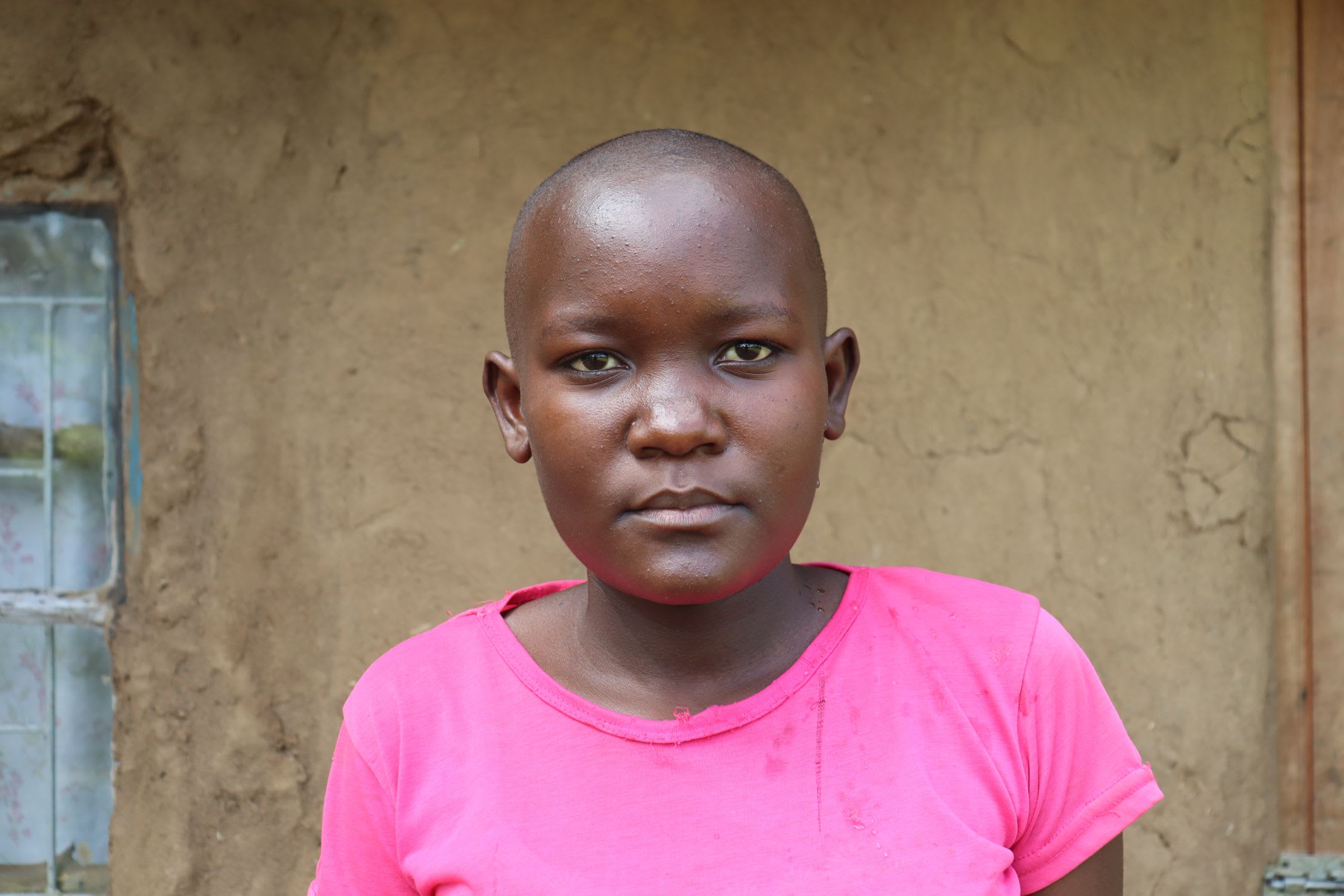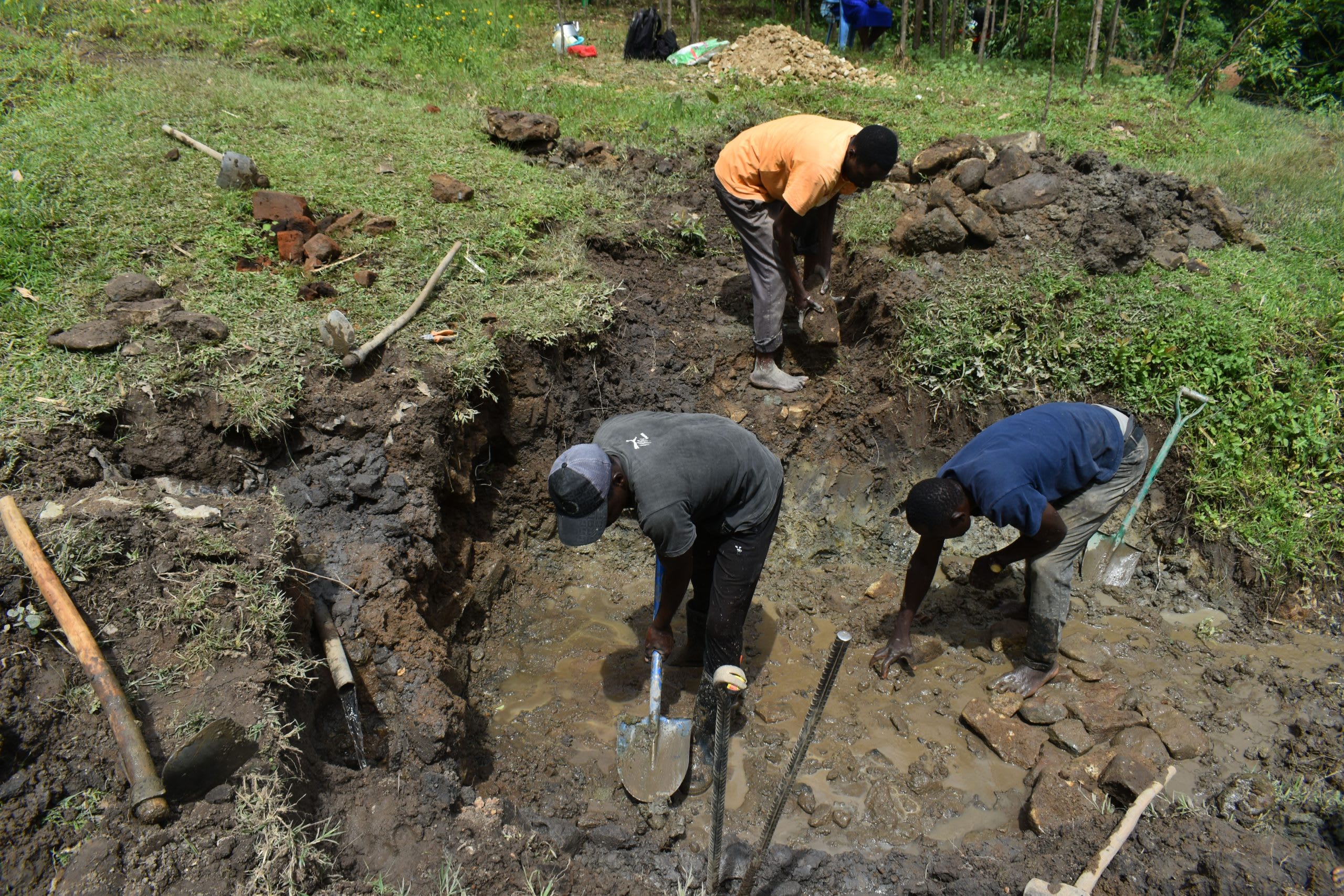The 280 community members who live in Shikutse rely on Mulambula Spring for their daily water, but it is in poor condition, and consuming its water puts everyone's health at risk.

Children collect water from the unprotected spring.
"The spring is in a bad state of disrepair, with [the] floor completely eroded. There is no stone pitching, and [the] wing walls have completely collapsed. Water from this source is cloudy and has some particles, which indicates a problem in the spring box. The drainage channel has become a breeding ground for mosquitoes," said Field Officer Daniel Mwanzia, describing the spring's condition.
Fifteen-year-old Irene is familiar with the negative effects of consuming the spring's water, but like her fellow community members, she has no other choice.

Irene near the spring.
"In the past year alone, I've missed school four times due to water-related illnesses," said 15-year-old Irene.
"During this year's Easter holiday, I got sick from drinking contaminated water. I had gone to fetch water but found a queue, and in the process of waiting for my turn, I got thirsty and drank directly from the discharge pipe. I developed [a] fever and had a serious cough. It was so serious that at the dispensary, the doctor thought I had TB! I was treated and discharged. However, I didn't enjoy Easter because I couldn't play with my friends."
"My dad took me to the nearby dispensary where I was treated and discharged. The doctor prescribed some antibiotics and told us to boil or treat drinking water," said Irene.

Irene collecting water.
Sadly, that is not her only problem. Much of her time is spent vying for a place in line to collect the water. The spring's condition makes it a slow, tedious process, and the line to collect water is always long.
"Since the discharge reduced, life has been difficult because collecting water takes a long time. It's even worse when other water points in the neighboring communities break down, and those people have to come to our water point," said Irene.
"[There are] long queues and competition for this precious commodity. Many times, I find adults ahead of me in the queue, and according to our culture, I have to let them collect water first. Every time an adult finds me waiting for my turn, they jump the queue without warning! Some adults just like to treat children badly, even without any provocation. I do my best to show them the respect they deserve, but a good number of them wrongly accuse children of littering the water point."

"The thought of going to this water point just makes me tired, especially on Saturdays when the queue can really be long."
Irene's experience collecting water is not only full of tension but also steals her time and keeps her away from other important things, like school.
"The time wasted queueing for water cannot be recovered. Any minute I lose has a negative impact on my performance in school. On many occasions, I collect water before going to school, and that means I get to class already tired, and that affects my level of concentration," Irene continued.

Irene helping with chores around her home.
Like most children her age, Irene would rather spend her time playing or learning than struggling with persistent water-related illnesses or being the target of others' frustrations and hostility. She dreams of a brighter future where she can quickly and efficiently collect water and still have the time and energy to pursue her dreams.
"My dream is to pursue a career in medicine. This way, I can get my family out of poverty and, once in a while, organize free medical clinics for the members of my community."
Steps Toward a Solution
Our technical experts worked with the local community to identify the most effective solution to their water crisis. They decided to safeguard the existing flowing spring.
Spring Protection
Springs are natural water sources that originate from deep underground. As water travels through various layers of the earth, it undergoes a natural filtration process, making it cleaner and safer to drink. To protect these spring sources from contamination, we construct a waterproof cement structure around layers of clay, stone, and soil. This design channels the spring water through a discharge pipe, facilitating easier, faster, and cleaner water collection.
Chlorine Dispenser
As an extra measure towards water quality safety, uniquely engineered chlorine dispensers are installed at all of our spring protection projects so community members can treat their water with pre-measured doses of chlorine. The chlorine treats any residual contamination and stays active for two to three days, ensuring water stays safe to use even when stored at home. Chlorine delivery and maintenance of the dispensers are part of our ongoing community support.
Community Education & Ownership
Hygiene and sanitation training are integral to our water projects. Training is tailored to each community's specific needs and includes key topics such as proper water handling, improved hygiene practices, disease transmission prevention, and care of the new water point. Safe water and improved hygiene habits foster a healthier future for everyone in the community. Encouraged and supported by the guidance of our team, a water user committee representative of the community's diverse members assumes responsibility for maintaining the water point, often gathering fees to ensure its upkeep.

 Protected Spring
Protected Spring
 Rehabilitation Project
Rehabilitation Project

















